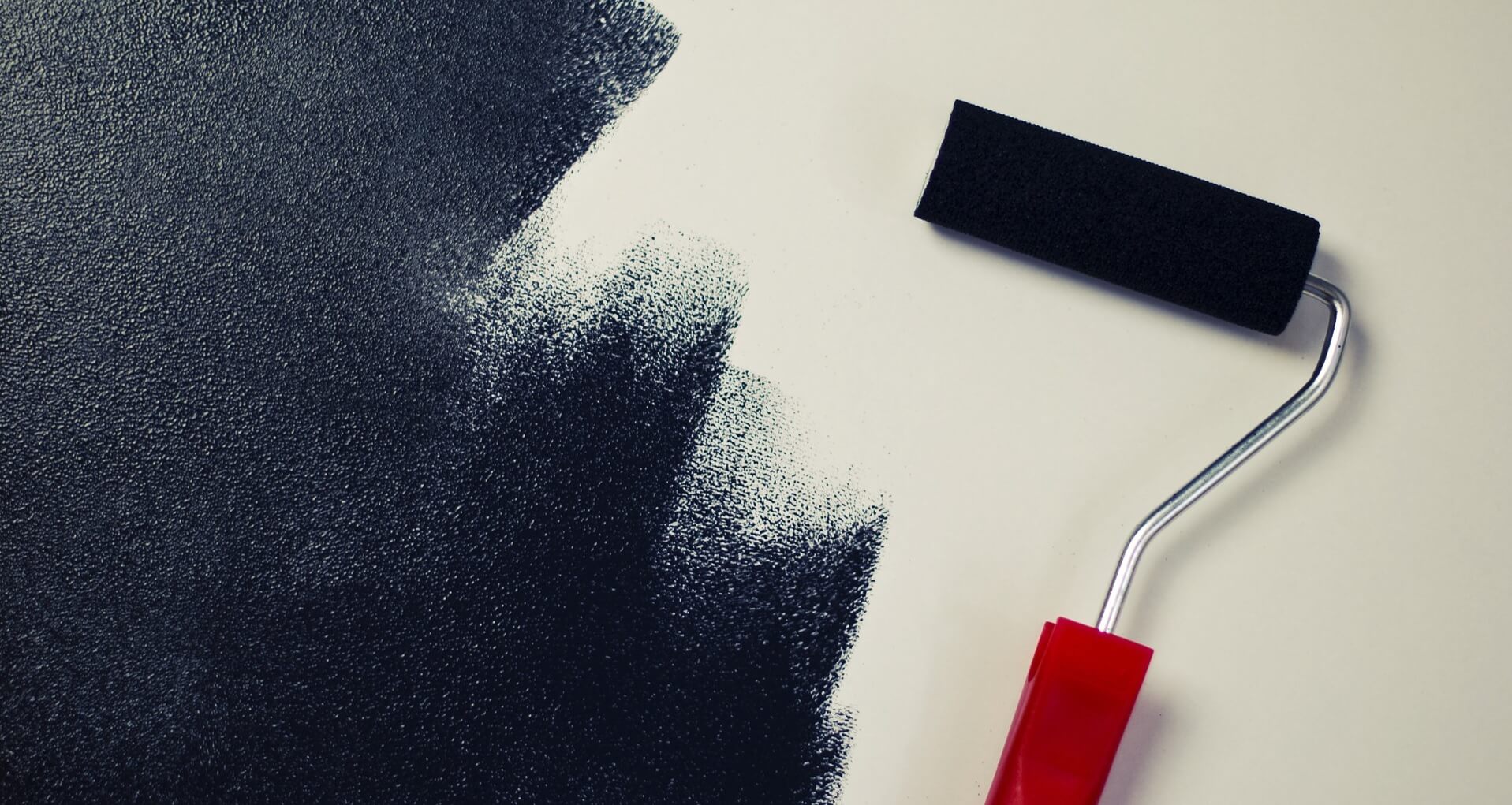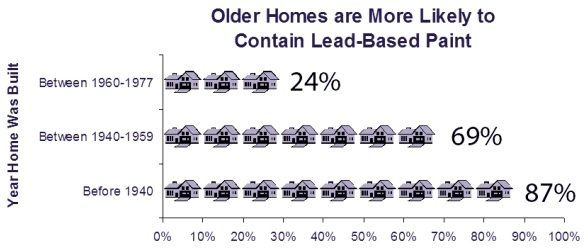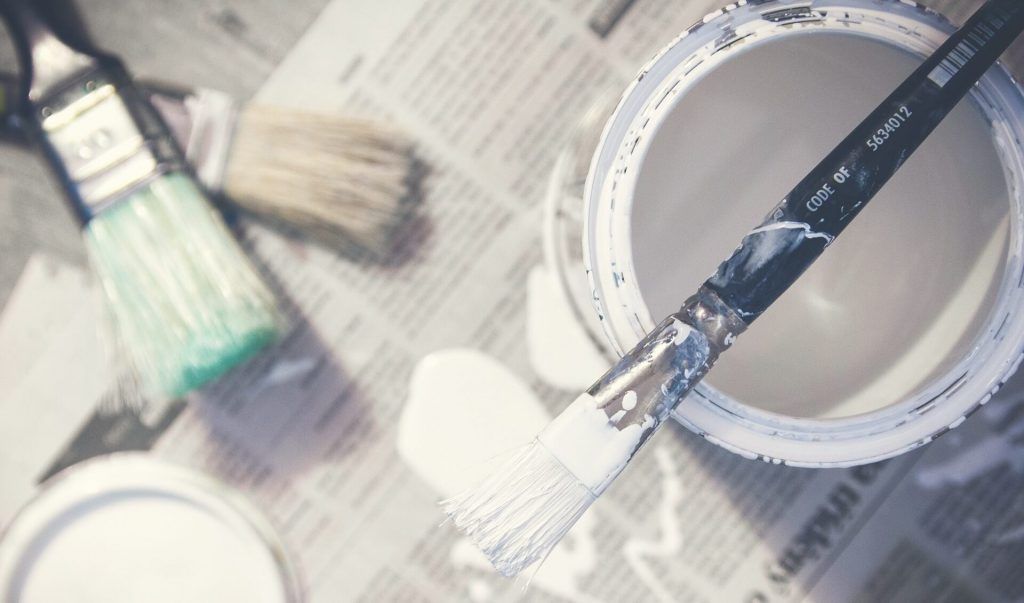
Home improvement projects are a satisfying hobby for many and a great opportunity to cut back on costs for others. Transforming your home at a fraction of the price is undoubtedly appealing.
However, don’t overlook the basics in your enthusiasm to pick up the brush. Inexperienced decorators inevitably make mistakes as they embark on a steep learning curve.
Nevertheless, the most important element of a DIY project is to never compromise on safety. Here are our top pieces of advice for staying well while painting:
Safety Tips

1. Exercise caution with old paint
Lead-based paint poses serious risks to the welfare of exposed individuals. In adults, lead poisoning can increase the risk of kidney damage and high blood pressure.
Children and pregnant women are particularly vulnerable to the harmful effects of lead. This toxic metal can impact negatively on the development of a child’s brain and nervous system. It also increases the risk of miscarriage and premature birth in pregnant women (1, 2).
Lead-containing paint was widespread before 1978 when the federal government intervened to ban these products for most uses. In general, older homes are much more likely to contain some lead-based paint.

Source: EPA.gov
Lead paint typically doesn’t pose a risk of causing health problems if it is in good condition. Problems arise when the paint deteriorates and begins to peel or chip off. This may be more likely to occur when the paint is present on surfaces that are exposed to lots of wear-and-tear. The risk is particularly acute in homes with children present, who are at a higher risk of swallowing paint chips (3, 4).
A straightforward home inspection can determine whether or not lead is present. Numerous home improvement and hardware stores also sell test swabs. However, it is important to exercise caution when dealing with surfaces where lead paint is present.
Do not paint over peeling lead-based paint as both layers will become susceptible to chipping off. Also, do not attempt to sand the lead paint off as this may create harmful dust. In addition, do not use a heat gun or torch as this process can produce toxic fumes (5).
The safest course of action if you have lead-based paint in your home is to seek out the services of a certified contractor. The EPA maintains a database of certified professionals. HouseLogic.com also has a useful resource describing removal options.
2. Pick products carefully and focus on ventilation
Paint solvents are what transform the solid components (such as pigments) of paint into a product that is fit for purpose. They allow the paint to be spread or brushed evenly across a surface.
One such solvent, the chemical benzene, is a volatile organic compound (VOC) and is known to pose short and long term health risks (6, 7).
Use caution when working with VOC-containing products, even if your exposure to these chemicals is only occasional. Other products used in decorating (including glue and adhesives) can contain VOCs.
Steps you can take to protect yourself:
- Choose low-VOC paints and decorating supplies where possible
- Protect yourself with a mask
- Ensure the workroom is well ventilated (for instance, by creating a cross draft)
Fumes from paints, adhesives, and other VOC-containing products carry potential health risks. These dangers can be reduced through careful planning and execution.
3. Practice ladder safety
Ladders have been a staple of slapstick and cartoon humor for generations. Health and safety initiatives may be notorious for their fault-finding ways but sometimes advice is well-intentioned.
Ladder-related injuries affect around half a million Americans each year. Approximately 300 of these are fatal accidents. Indeed, in March each year, a national “ladder safety month” campaign attempts to promote practices that can reduce the likelihood of injuries and deaths.
These injuries can occur indoors and outdoors. Even falls from a relatively low height can cause serious injury. So what can be done to reduce your risk?
- Determine the correct type and size of ladder needed for your project
- Don’t exceed the weight limit of the ladder
- Choose a ladder of appropriate height for the job at hand
Also, take the time to read guidance from the National Safety Council and OSHA.
4. Read hazard labels

The warning labels on paint cans serve an important purpose and their advice should be heeded.
Solvents in paint and paint thinners/strippers may be flammable. Store them away from heat and take appropriate safety precautions while using them.
Consult local regulations when your project is complete if you need to dispose of hazardous materials. Generally, they should be taken to a designated dump site and not be placed in a general waste container.
5. Use protective clothing and accessories
A durable pair of work gloves, protective goggles, and a dust mask are important and necessary gear for the task of scraping or sanding a surface.
If you are working with paint thinners or strippers, use a suitable set of rubber gloves, eye goggles, and a respirator. Approved respirators can be purchased from hardware and home improvement stores.
Keep in mind that the task of painting can still be messy despite your best intentions. Move furniture to safety and protect floors while you work.
Safety goggles are of particular importance because some chemicals in paint can cause eye irritation or eye damage. If you do get paint or paint thinner in your eye, flush with water immediately and seek medical advice from an opthalmologist. Alternatively, visit an emergency room for help.
6. Be careful with power tools
Painting is viewed by many as a novice-friendly home improvement task. However, power tools and sharp objects can pose a safety risk. Operate sanding tools safely and exercise caution when handling sharp items for scraping paint away.
Store the tools in a safe place (ideally a locked toolbox) when not in use to minimize the chances of injury to yourself or children.
